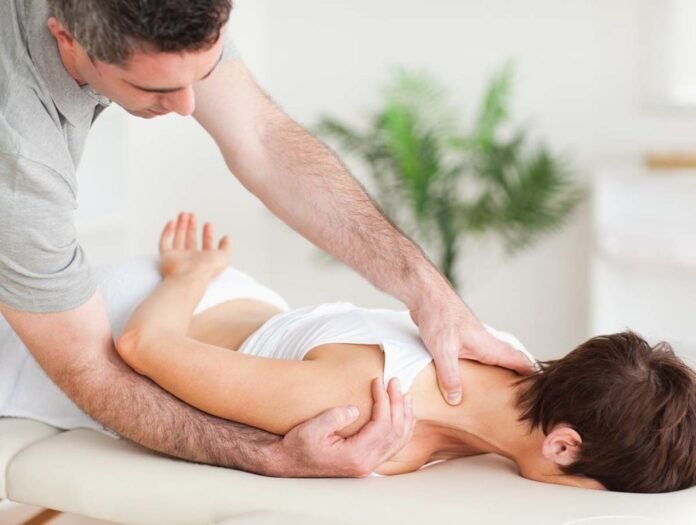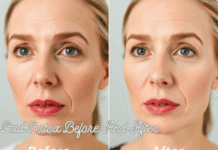Massage therapy is a practice rooted in the belief that manual manipulation of the body’s muscles and soft tissues can promote health and well-being. This form of therapeutic touch has evolved over thousands of years, drawing from various cultural traditions.
Today, it encompasses a wide range of techniques and styles, from the gentle strokes of Swedish massage to the targeted pressure of deep tissue massage. Across the board, massage therapists aim to reduce stress, relieve pain, and improve overall physical function.
The field of massage therapy is supported by an increasing body of research. Studies have explored its potential to alleviate symptoms of various conditions such as chronic back pain, anxiety, and high blood pressure.
The practice works by stimulating circulation, which in turn facilitates the natural healing processes of the body. It also affects the nervous system and can lead to a state of deep relaxation, which may help to lower stress hormones and release muscle tension.
Those seeking to become massage therapists must complete a rigorous program of study that includes anatomy, physiology, ethics, and hands-on practice. They are trained to assess the needs of each client and apply techniques that are both appropriate and personalized.
Massage therapy is often integrated into broader healthcare practices, as therapists work alongside doctors, chiropractors, and physical therapists to support patients’ health. With its holistic approach to healing, massage therapy continues to gain recognition as a valuable component of modern health care.
Table of Contents
History of Massage Therapy in Singapore
Massage therapy in Singapore has a rich history, influenced by the diverse ethnic cultures that call the city-state home. Traditional Chinese Medicine (TCM), which includes various forms of massage such as Tui Na, arrived with early Chinese immigrants. In TCM, massage is used to balance the body’s chi, or life force, and enhance health.
Similarly, the Malays, who are indigenous to the region, contributed their own traditional message, Urut. This technique often incorporates jamu, a herbal medicine, with physical manipulation to treat physical ailments and promote well-being.
Indian influence on Singapore’s massage therapy is seen through Ayurveda, a holistic system that includes Abhyanga a form of massage involving herbal oils to detoxify and rejuvenate the body.
| Ethnicity | Massage Therapy |
| Chinese | Tui Na |
| Malay | Urut |
| Indian | Ayurvedic Massage (Abhyanga) |
In the early 19th century, as Singapore became a bustling port, these practices became more widespread and began to integrate. By the 20th century, Western massage therapies like Swedish and Sports Massage were introduced and have been embraced alongside traditional methods.
Today, Singapore’s massage therapy industry includes a vast array of styles, from the traditional to the modern, serving both residents and international visitors. Regulations ensure practitioners are well-trained, maintaining high standards across this ancient yet ever-evolving profession.
Benefits of Massage Therapy
Massage therapy can offer a diverse range of advantages to individuals seeking relaxation and pain relief. It is frequently incorporated into health and wellness routines for its therapeutic benefits.
Physical Health:
- Pain Relief: Massage is known to alleviate discomfort in various body parts such as the back, neck, and head.
- Improved Circulation: By stimulating blood flow, massage can facilitate better oxygen and nutrient delivery to cells.
- Muscle Recovery: Athletes and those with muscle strain find massages helpful for restoring muscle condition.
Mental Health:
- Stress Reduction: Regular sessions can significantly lower stress levels, promoting mental well-being.
- Enhanced Sleep Quality: By inducing relaxation, massage can improve the quality of sleep, aiding in restfulness.
Additional Benefits:
- Flexibility: It can increase joint mobility and flexibility by relieving muscle tightness.
- Immune Support: Some studies suggest a boost in immune system functionality following massage therapy.
| Benefits | Description |
| Pain Management | Reduces the intensity and frequency of pain. |
| Stress and Anxiety | Decreases symptoms of stress and anxiety. |
| Sleep Quality | Encourages deeper, more restorative sleep patterns. |
Different Types of Massage Therapies Available
Massage therapy encompasses a wide range of techniques aimed at manipulating the muscles and soft tissues to improve wellness. Here is an overview of some common massage modalities:
Swedish Massage: Often considered a classic form of massage, the Swedish technique uses five main strokes, including effleurage and petrissage, to promote relaxation and circulation.
Deep Tissue Massage: Targets the inner layers of muscles and connective tissues; used to treat chronic pain and tension and aid in recovery from injuries.
Hot Stone Massage: Utilizes smooth, heated stones placed on specific points of the body; the warmth eases muscle stiffness, increases circulation, and induces deep relaxation.
Shiatsu Massage: Originating from Japan, Shiatsu employs rhythmic pressure from the fingers on acupressure points, intending to restore energy balance within the body.
Aromatherapy Massage: Incorporates the use of essential oils to enhance the therapeutic effects of massage; oils are selected according to the individual’s needs and can assist with stress, anxiety, or pain management.
Reflexology: Focuses on applying pressure to reflex points on the feet, hands, or ears that correspond to different body organs and systems, to promote health in these areas.
Thai Massage: An interactive form of massage that combines stretching, pulling, and rocking techniques to clear energy blockages and enhance flexibility and range of motion.
| Type | Focus Area | Benefits |
| Swedish | Whole body | Relaxation, Circulation |
| Deep Tissue | Muscle layers | Pain relief, Recovery |
| Hot Stone | Specific points | Relaxation, Circulation |
| Shiatsu | Acupressure points | Energy balance |
| Aromatherapy | Senses (Olfactory) | Mood enhancement |
| Reflexology | Reflex points | Organ health |
| Thai | Body flexibility | Flexibility, Energy flow |
How to Choose the Right Type of Massage for Your Needs
When selecting a massage, considering one’s physical condition is essential.
For general relaxation and stress reduction, Swedish massage is recommended.
Those with chronic pain or tight muscles could benefit from a deep tissue massage, which targets deeper layers of muscle and connective tissue.
For individuals participating in physical activities, a sports massage can help prevent injuries, enhance performance, and aid in recovery.
If one is pregnant, a prenatal massage can alleviate discomfort and is customized to the needs of expectant mothers.
To identify tender areas before applying specific techniques to address discomfort, consider a trigger point massage.
Below is a table summarizing massage types and their suitability:
| Massage Type | Ideal For |
| Swedish | Relaxation, stress reduction |
| Deep Tissue | Chronic pain, tight muscles |
| Sports | Athletes, injury prevention |
| Prenatal | Pregnant women |
| Trigger Point | Localized pain, muscle knots |
Before scheduling a session, an individual should consult with a licensed massage therapist to discuss specific concerns or conditions.
Additionally, checking the therapist’s qualifications and ensuring the therapist is certified in the massage type of interest is pivotal.
















